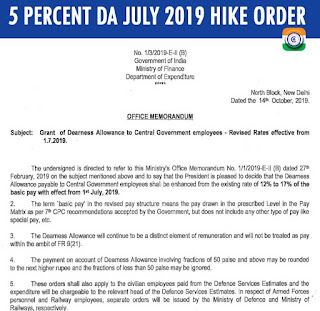Maruti Suzuki to get boost from Seventh Pay Commission’s recommendations
MUMBAI: Investors expect Maruti Suzuki to get a boost from the Seventh
Pay Commission's recommendations later this year that will lead to
salaries of government employees rising. The Pay Commission is expected
to submit its report by October and this is likely to be implemented
from July 2016, likely adding to an expected double-digit growth in
passenger car sales in FY17. Maruti Suzuki is expected to be the main
beneficiary, analysts said. The last Pay Commission report had resulted
in car sales rising 18 per cent annually between FY09 and FY11.
"The Sixth Pay Commission, which was implemented in August 2008,
resulted in almost 10 times increase in Maruti's sales to government
employees from FY08 to FY12," Jatin Chawla and Akshay Saxena, research
analysts at Credit Suisse, wrote in a July 15 report.
The market value of Tata Motors surged past Maruti Suzuki in 2010, after
the Indian company turned JLR around following its acquisition from
Ford in 2008. JLR more than made up for Tata Motors' poor domestic
performance over the past few years. The Chinese decline has forced many
carmakers to scale down targets.
JLR said June sales were flat because strong growth in Europe and North America was offset by a dramatic slowdown in China.
German luxury carmaker Audi has abandoned a target to sell 600,000 cars
this year in China, its biggest market, as the country's stock market
rout sapped demand for luxury cars, Bloomberg reported on Thursday.
Audi's Chinese sales rose 1.9 per cent to 273,853 cars in the first
half. Credit Suisse reckons that a salary increase could boost demand
for cars in India by 10 per cent. It upgraded the expectation for volume
growth at Maruti Suzuki for FY17 to 23 per cent from 17 per cent on
account of the expected pay commission boost. It also increased the
stock's target price to Rs 5,100 at the end of 2017 fromRs 4,370
previously. Maruti expects there will be a repeat this time around.
"We have sold almost 200,000 vehicles to government employees in FY15,"
said Randhir Singh Kalsi, executive director, sales, Maruti Suzuki. "We
certainly believe we can get more incremental volumes after
implementation of the Seventh Pay Commission." Maruti saw a pickup
mostly in the Rs 2.5-5 lakh price bracket last time around.
Others also expect a bounce. "An increase in disposable income certainly
will help potential buyers to purchase high quality products. So,
definitely a salary hike of government employee will propel the industry
growth," said Rakesh Srivastava, president, sales, Hyundai India.
Growth was seen across segments and geographies after the last pay
increase, he said.
There are about 30 lakh central government employees while state
government workers number about three times that. About a fourth of them
are paidRs 30,000-50,000 per month and nearly 10 per cent may buy cars,
Credit Suisse estimates, adding up to an additional volume of about
300,000 units.
Among those who get a pay increase, those who have set aside enough for
children's education and own a home will be the ones most likely to buy a
new car, said Maruti's Kalsi, pointing out that brands will need to
target the entire family, not just breadwinners.
"Importantly, car buying is no longer a prerogative of the parents and
their teenage children now play an important role in choosing a car," he
said.
Changing consumer preferences also indicate that it won't be just
entry-level cars that are likely to rise; some may look to upgrade.
"We are (expecting) incremental demand from employees for compact as
well as sedan cars," said Srivastava of Hyundai. Apart from the
additional pay, arrears will also play a role. The Sixth Pay Commission
award saw employees getting arrears for 32 months in two installments in
FY09 and FY10. This means that any delays in payment enhance the
ability of an employee to buy a car. Carmakers offer special discounts
for government employees and it's easier for them to get loans from
public sector banks as well.
Via
Economic Times










